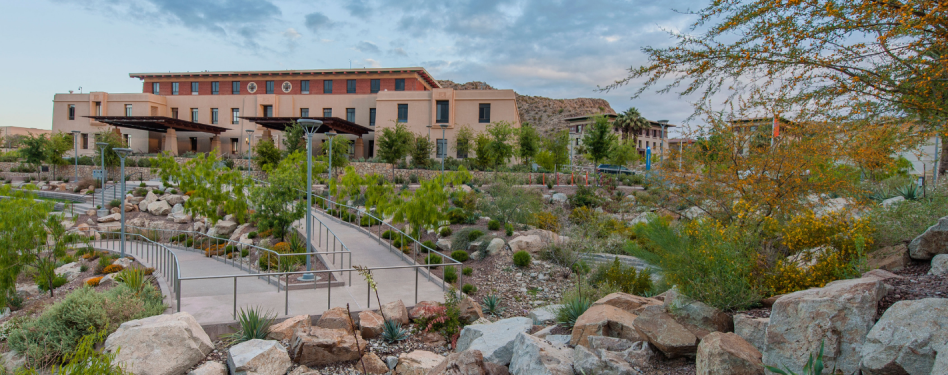
Feature image: SITES certified University of Texas at El Paso.
Exploring the value of SITES through seven case studies from around the world.
The Sustainable Sites Initiative (SITES) offers the most comprehensive system for developing sustainable landscapes. SITES emphasizes that land is a crucial component of the built environment and can be planned, designed, developed and maintained to protect and enhance the benefits we derive from healthy, functioning landscapes. These benefits — such as climate regulation, hazard mitigation, and the provision of clean air and water, to name only a few—are essential to the health and well-being of humans and all other life on the planet, and offer considerable economic benefits.
This new series of seven case studies, offered as a two-part educational course, demonstrates the value of SITES certification and presents concrete examples of these benefits in action.
The Value of SITES Certification Part 1
The Value of SITES Certification Part 2

Feature images: SITES-certified Xuhui Runway Park, Chicago Navy Pier and Dell Medical District
The case studies cover a range of project types and geographies, and can help guide future projects in creating ecologically resilient landscapes that benefit the environment, property owners, and local and regional communities and economies.
Chicago Navy Pier is the first project to earn Gold certification under the SITES v2 Rating System. The project expanded green spaces, improved pedestrian access, increased energy efficiency, implemented innovative storm water management strategies, and much more. Read the case study.
One of the first parks built as part of the District of Columbia’s Anacostia Waterfront Initiative, Canal Park is a model of sustainability, attaining both SITES Gold and LEED Gold certifications, and establishing itself as a social gathering place and an economic trigger. Read the case study.
Xuhui Runway Park is an innovative urban revitalization project that breathes new life into a unique piece of Shanghai’s history. It is the first project in Mainland China to earn Gold certification under the SITES rating system. Read the case study.
Dell Medical District at the University of Texas at Austin
The overall vision of this project was to design a new open, inviting and people-centered campus, connected to its environment and community. People and the environment work together as a functioning system, focused on improving health both within their medical facilities and outside of them. Read the case study.
University of Texas at El Paso
The project is one of the first and largest green infrastructure projects in the El Paso region, and one of the few projects in the region that displays the diversity and beauty of low-water-use plants native to the Chihuahuan Desert. Read the case study.
Earning SITES Gold certification, HP’s Idaho Campus became the first SITES certified project in Idaho, and the first corporate campus in the world to certify using the SITES v2 rating system. Read the case study.
West Laurel Hill's Nature Sanctuary
Located on a once disturbed urban dumpsite, West Laurel Hill’s Nature Sanctuary outside of Philadelphia is perhaps one of the most unique projects to achieve SITES certification. While most may assume this is solely a public park, it’s actually, first and foremost, a green cemetery— the first of its kind to receive a SITES designation in the country. Read the case study.
